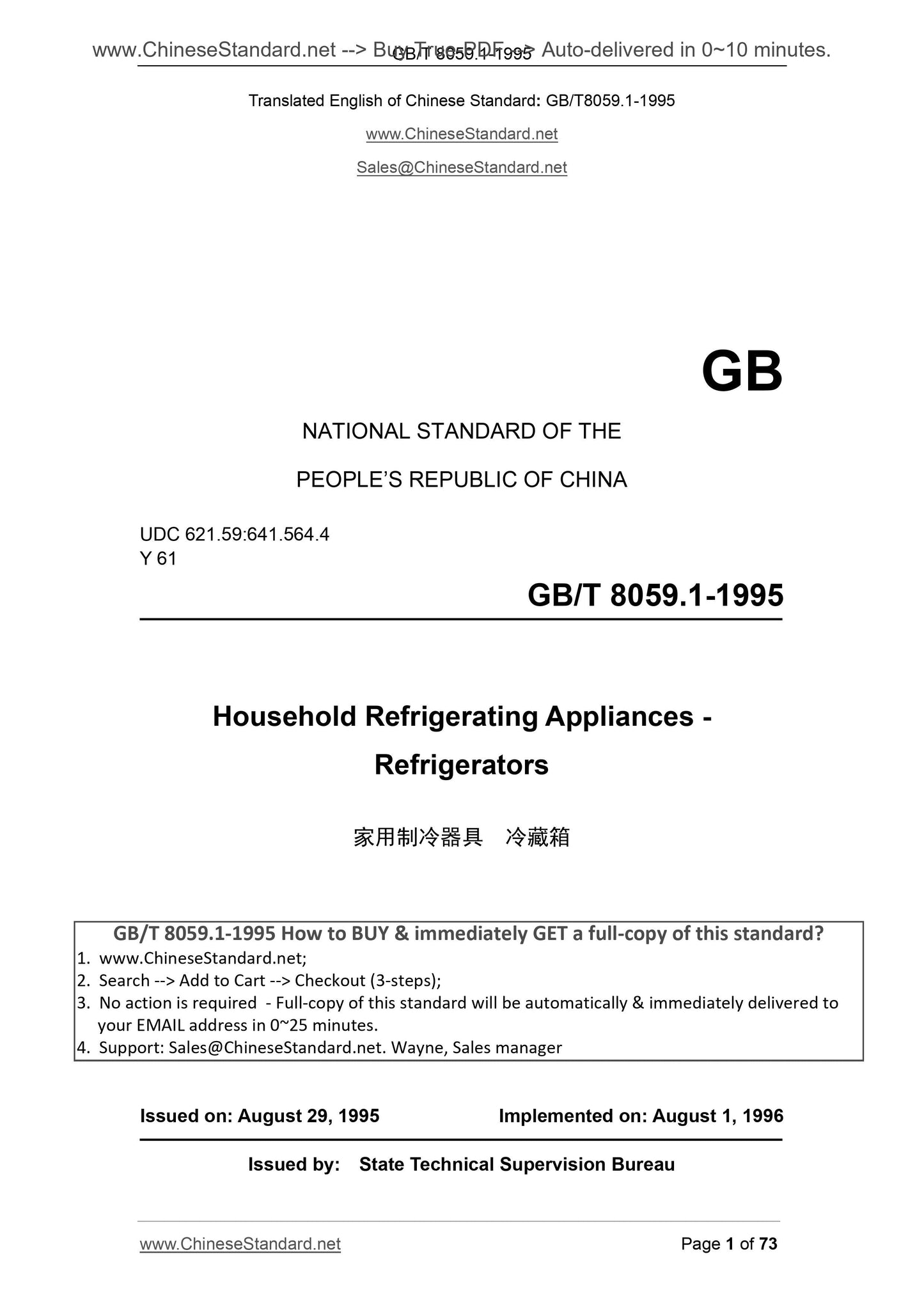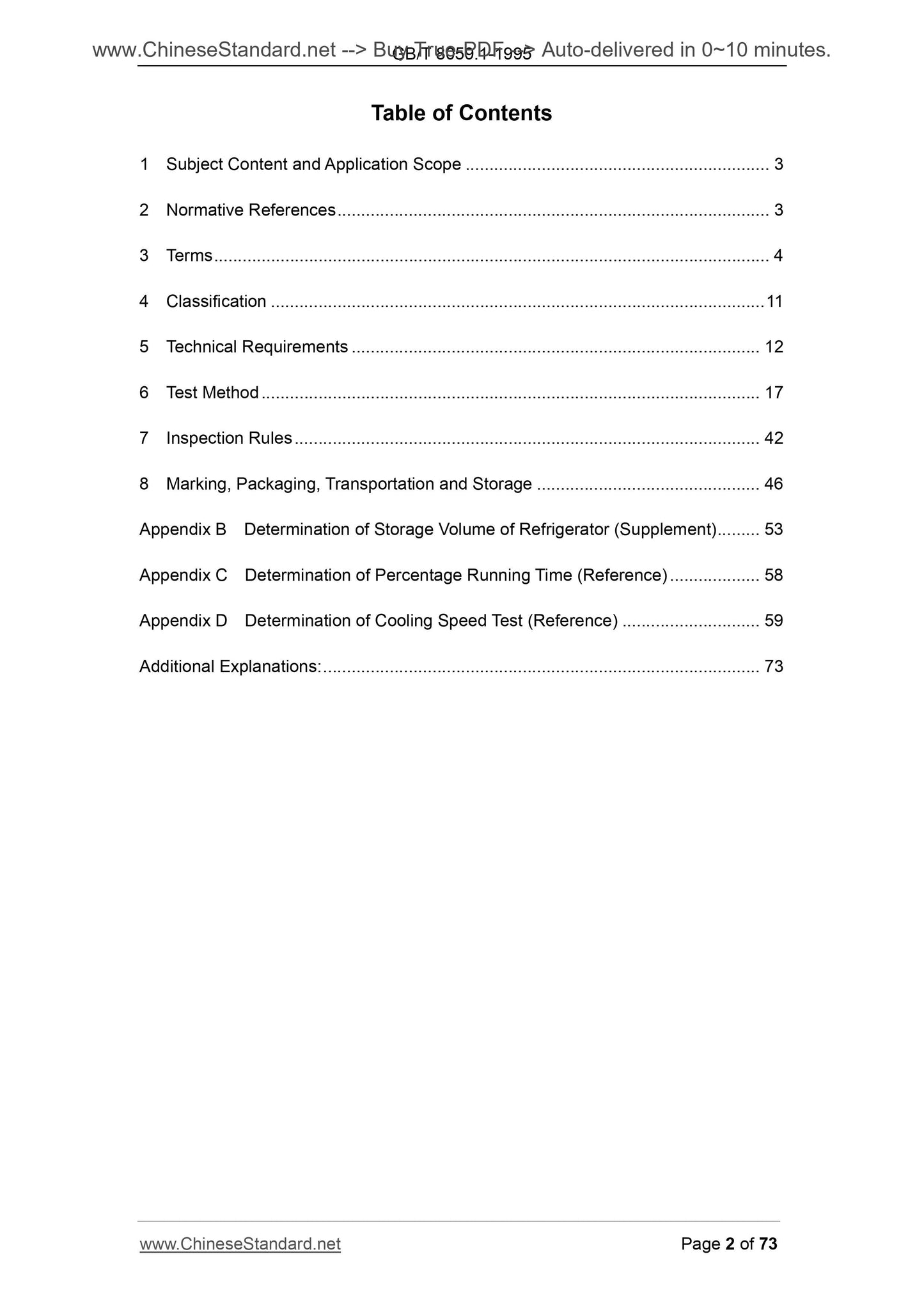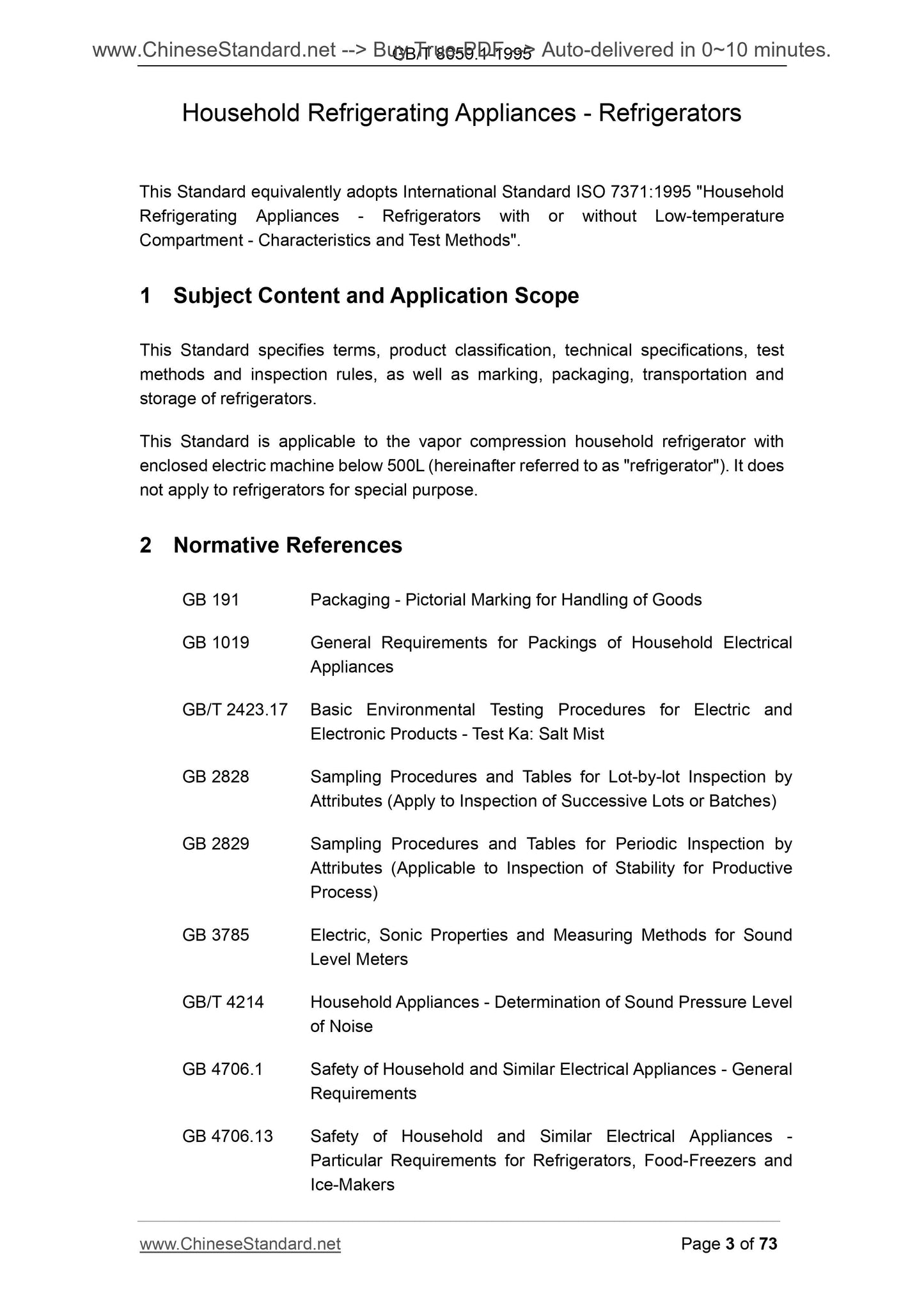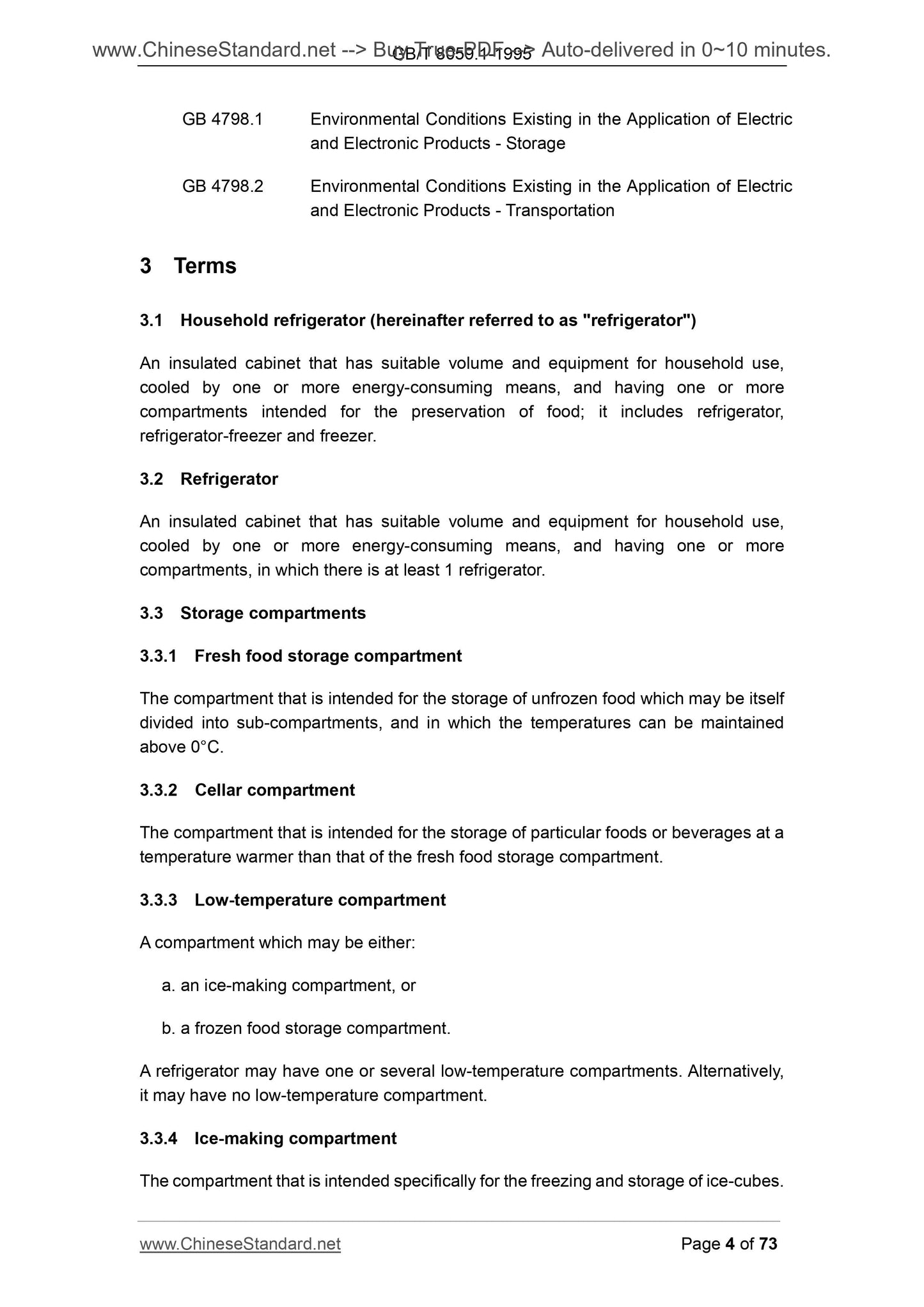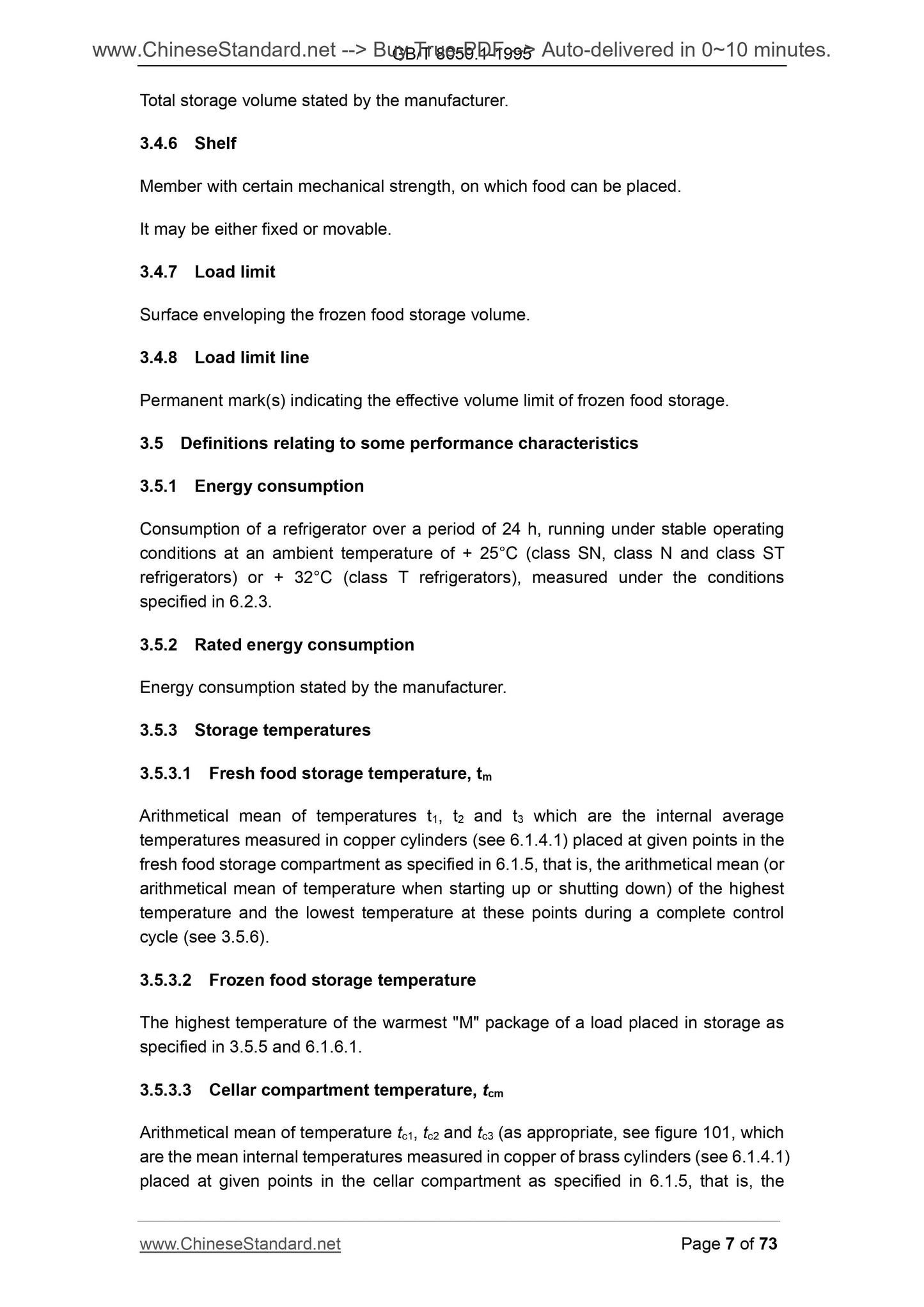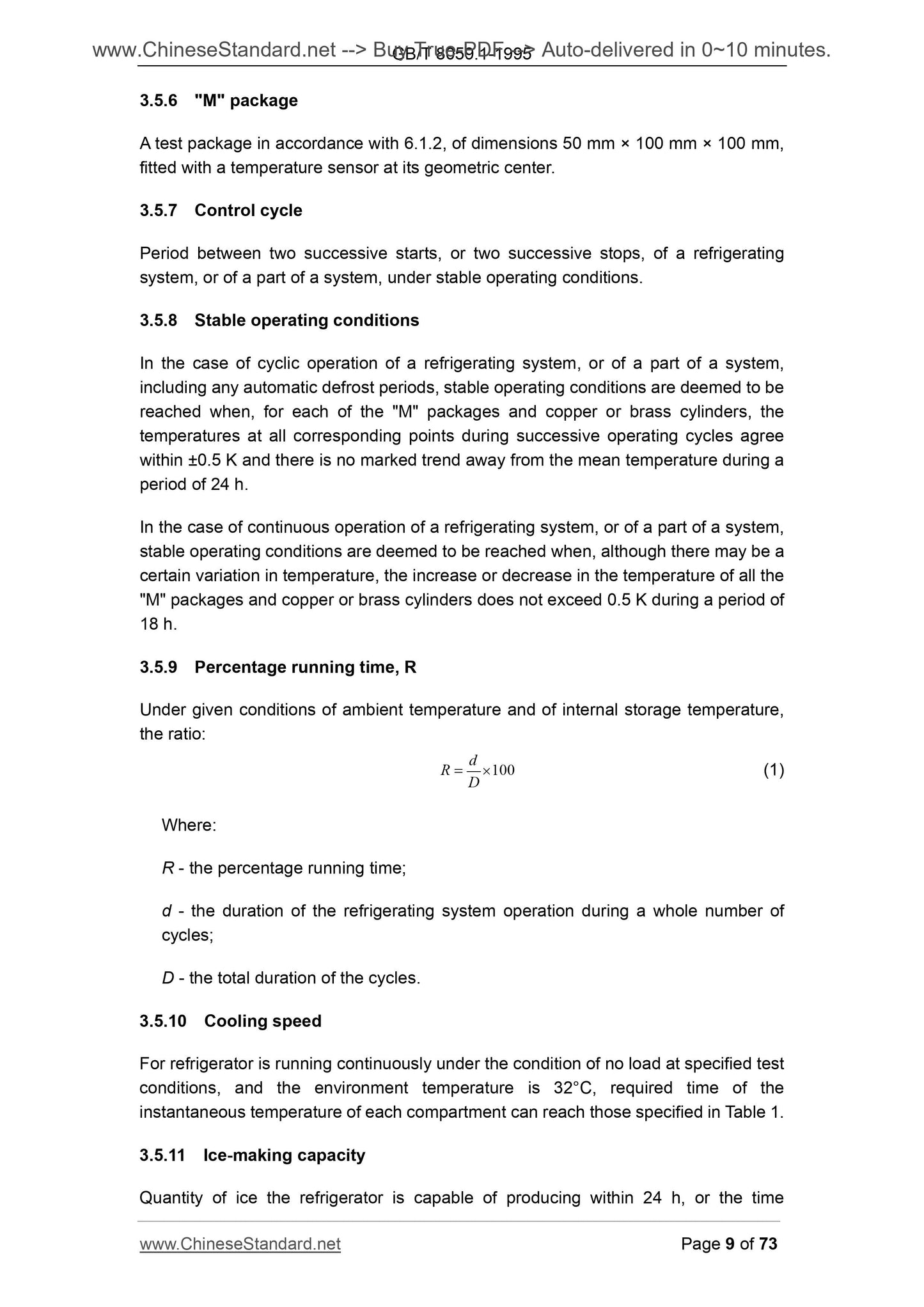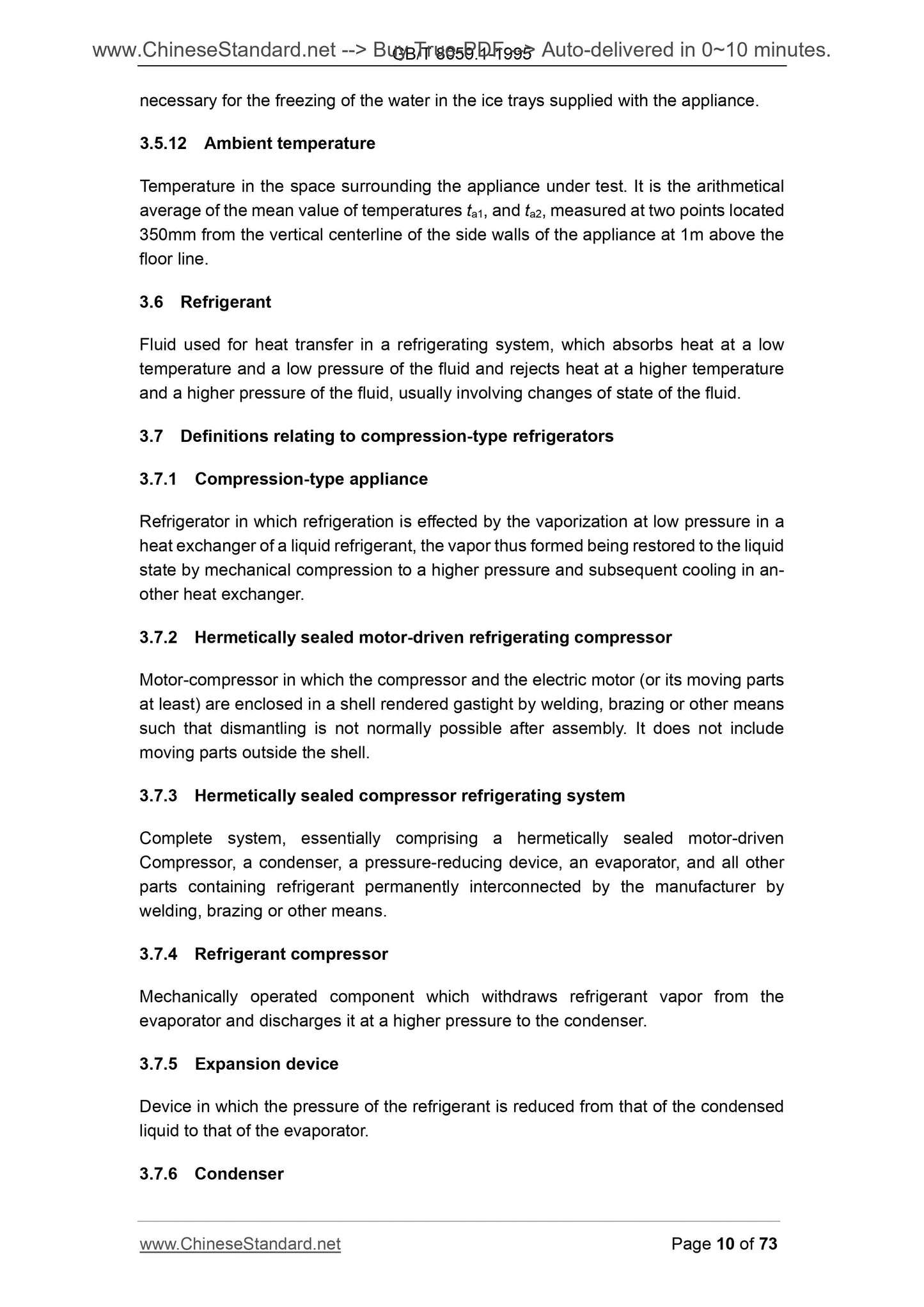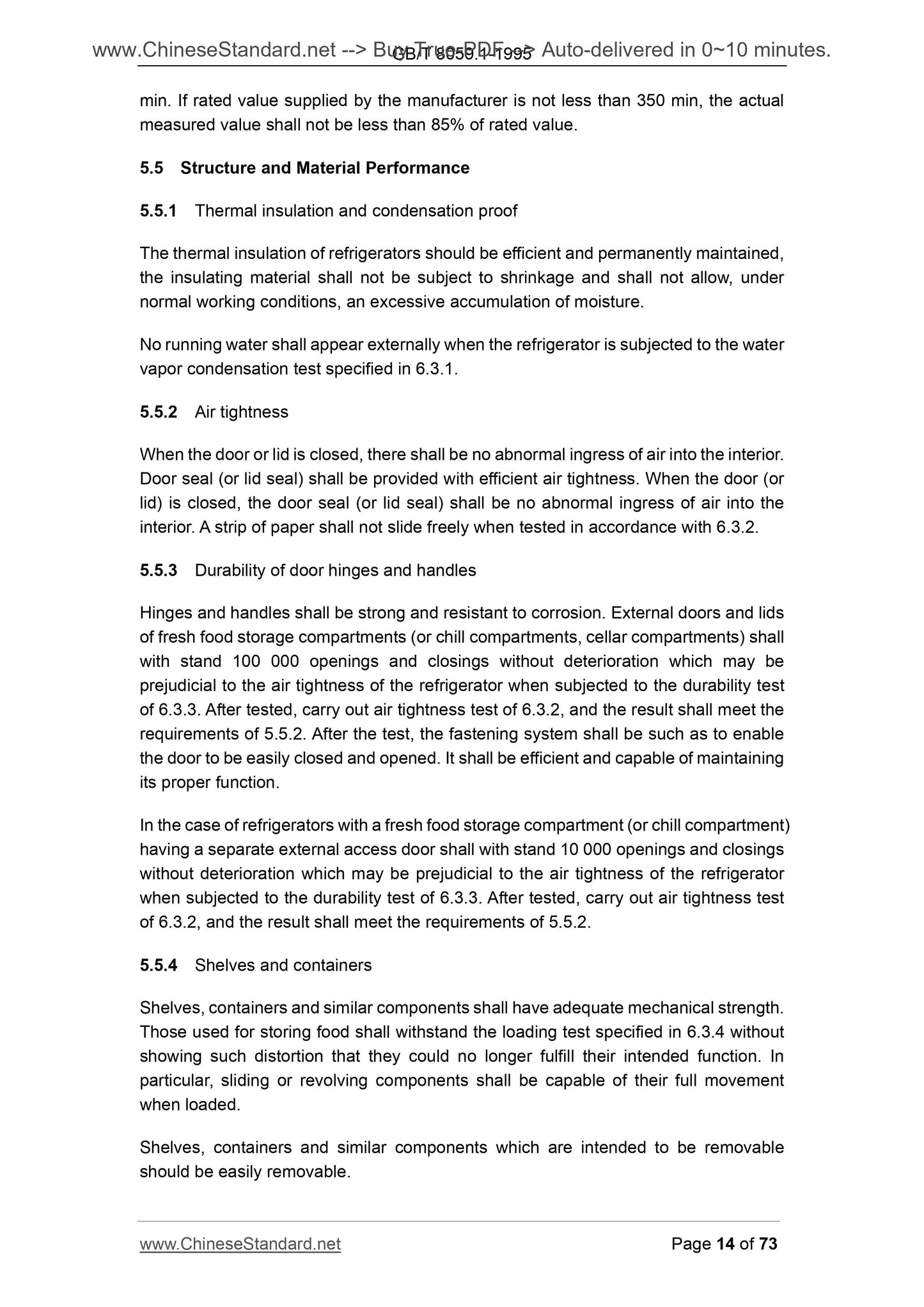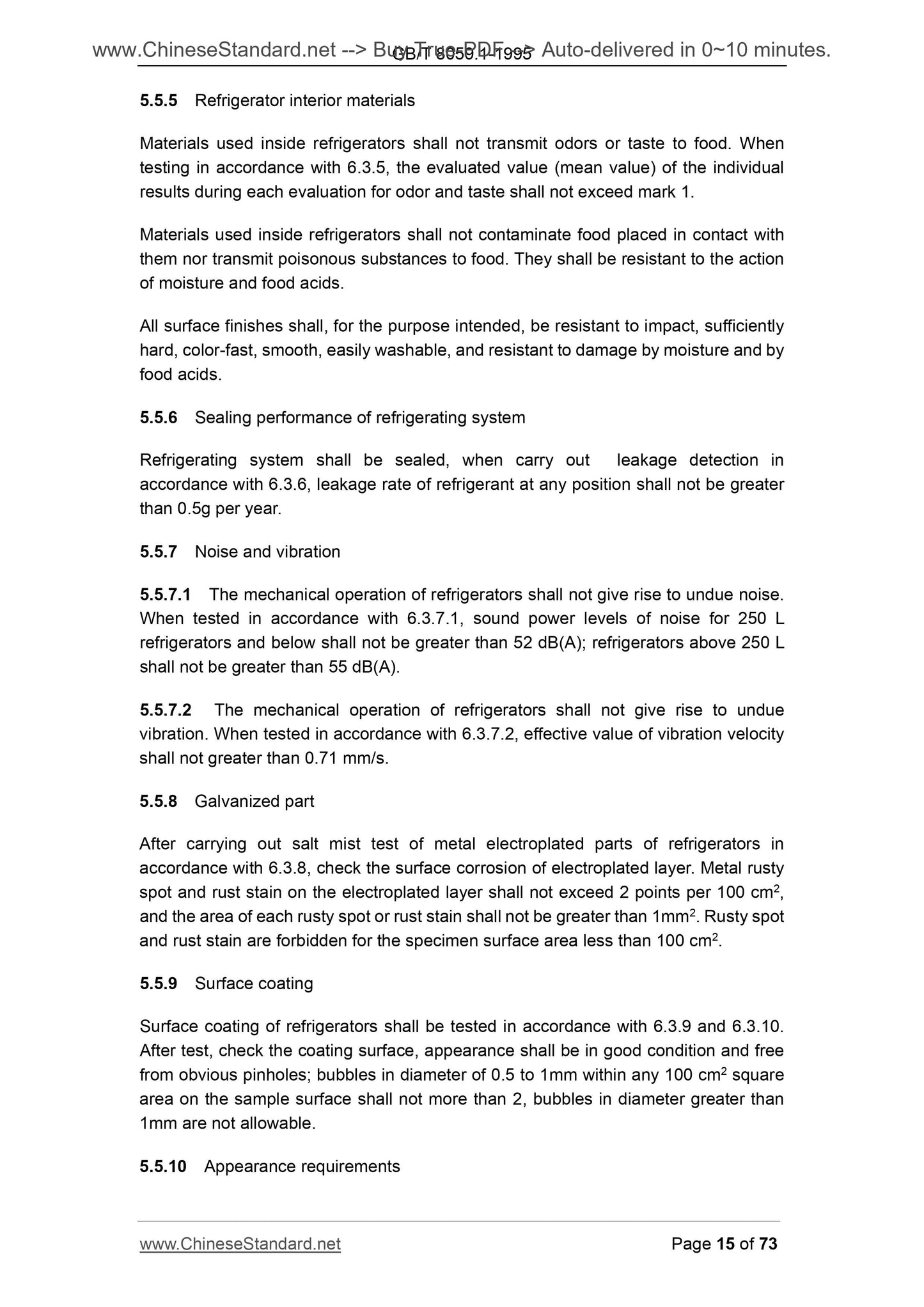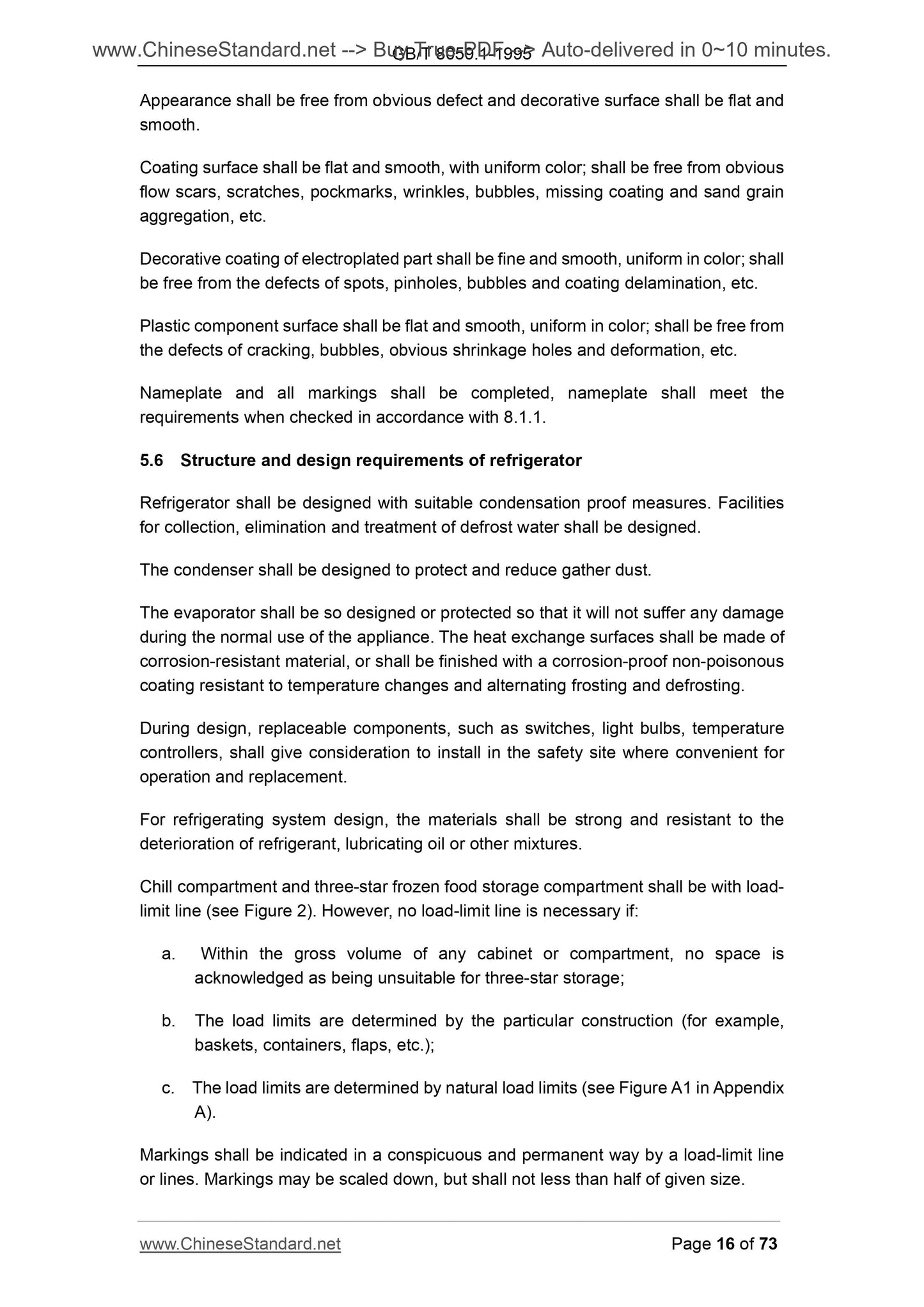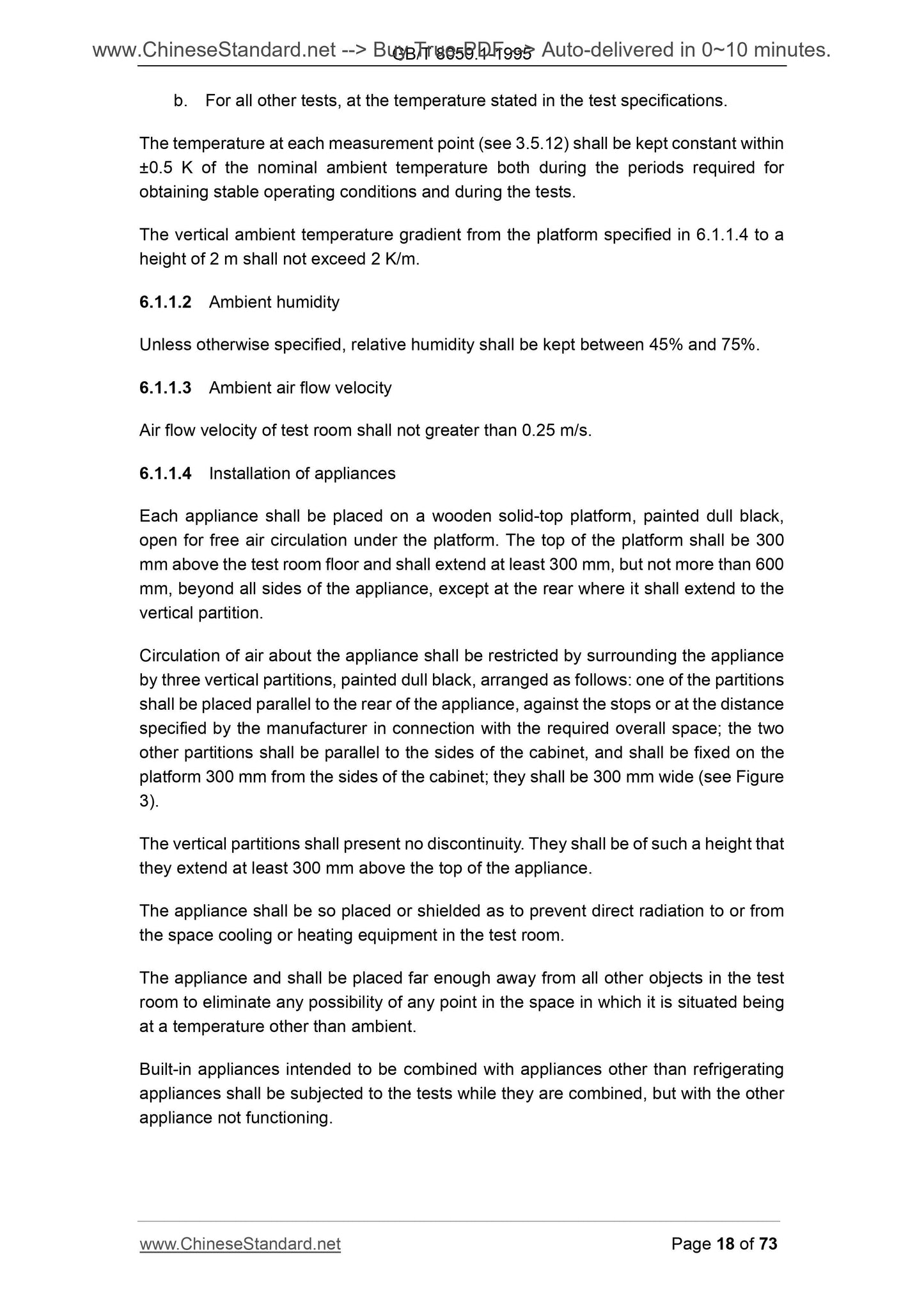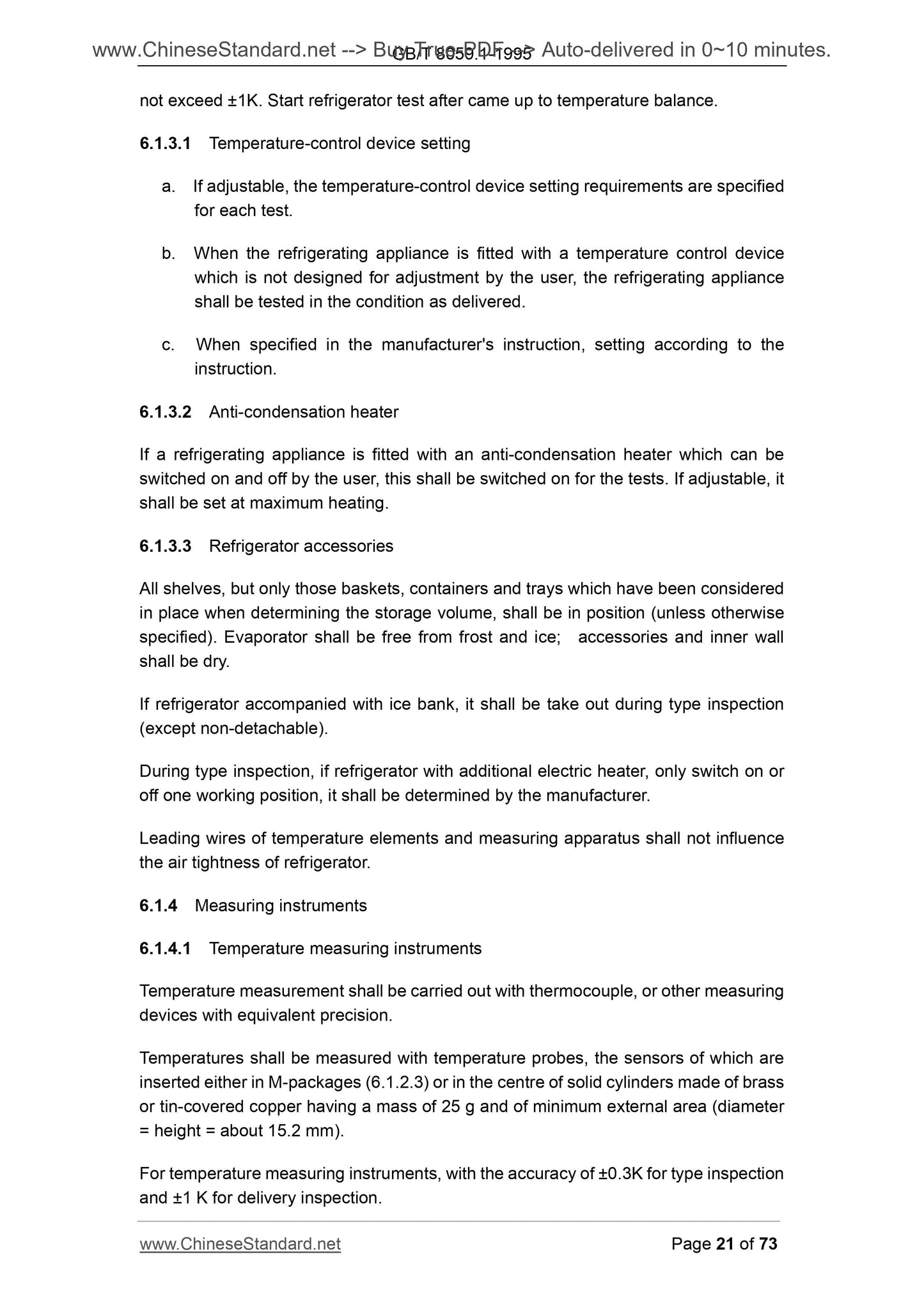1
/
of
12
www.ChineseStandard.us -- Field Test Asia Pte. Ltd.
GB/T 8059.1-1995 English PDF (GB/T8059.1-1995)
GB/T 8059.1-1995 English PDF (GB/T8059.1-1995)
Regular price
$165.00
Regular price
Sale price
$165.00
Unit price
/
per
Shipping calculated at checkout.
Couldn't load pickup availability
GB/T 8059.1-1995: Household refrigerating appliances - Refrigerators
Delivery: 9 seconds. Download (and Email) true-PDF + Invoice.Get Quotation: Click GB/T 8059.1-1995 (Self-service in 1-minute)
Newer / historical versions: GB/T 8059.1-1995
Preview True-PDF
Scope
This Standard specifies terms, product classification, technical specifications, testmethods and inspection rules, as well as marking, packaging, transportation and
storage of refrigerators.
This Standard is applicable to the vapor compression household refrigerator with
enclosed electric machine below 500L (hereinafter referred to as "refrigerator"). It does
not apply to refrigerators for special purpose.
Basic Data
| Standard ID | GB/T 8059.1-1995 (GB/T8059.1-1995) |
| Description (Translated English) | Household refrigerating appliances - Refrigerators |
| Sector / Industry | National Standard (Recommended) |
| Classification of Chinese Standard | Y61 |
| Classification of International Standard | 97.040.30 |
| Word Count Estimation | 47,494 |
| Date of Issue | 8/29/1995 |
| Date of Implementation | 8/1/1996 |
| Older Standard (superseded by this standard) | GB 8059.1-1987; JB 4017-1985 |
| Quoted Standard | GB 191; GB 1091; GB/T 2423.17; GB/T 2828; GB/T 2829; GB/T 3785; GB/T 4214; GB 4706.1; GB 4706.13; GB 4798.1; GB 4798.2 |
| Adopted Standard | ISO 7371-1995, MOD |
| Issuing agency(ies) | State Bureau of Technical Supervision |
| Summary | This standard specifies the terms, product classification, technical requirements, test methods and inspection rules freezer, logos, packaging, transportation, storage and so on. This standard applies to the following closed-500L motor driven compression household refrigerator, this standard does not apply to special purpose freezer. |
Share
